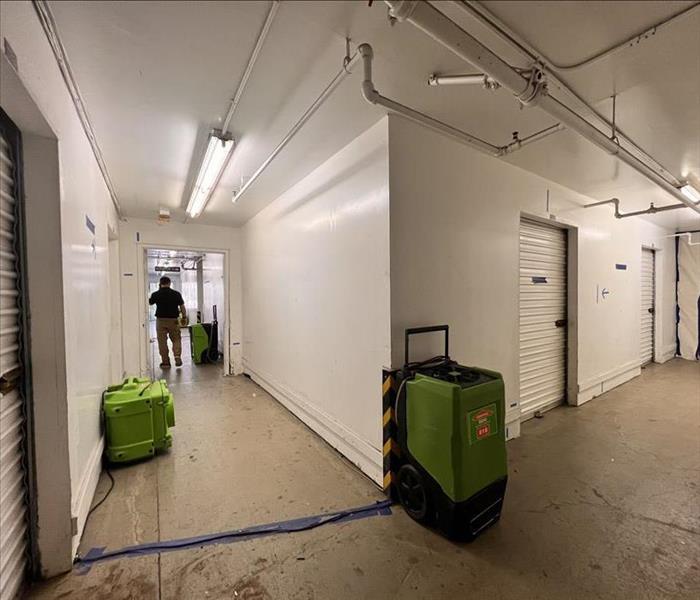Everything You Need to Know About Drying Equipment
2/20/2024 (Permalink)
Water damage can be a homeowner's nightmare, but fear not – efficient drying techniques are the unsung heroes in the battle against water leaks. Let's demystify the workings of essential drying equipment such as air movers and dehumidifiers.
1. Air Movers: The Powerhouse of Evaporation
Air movers, often resembling high-powered fans, play a crucial role in accelerating the evaporation process. By creating a continuous flow of air across wet surfaces, they enhance moisture evaporation, turning water into water vapor. This swift evaporation is essential in preventing stagnant water, minimizing the risk of mold growth, and expediting the overall drying process.
2. Dehumidifiers: Moisture's Nemesis
Dehumidifiers are the heavy lifters in the drying arsenal. These machines work by extracting excess moisture from the air, reducing humidity levels to an optimal range. The process involves pulling in moist air, cooling it to condense the moisture into water, and then releasing the drier air back into the environment. This not only assists in drying surfaces but also prevents secondary issues like mold and mildew.
3. Moisture Meters: Precision in Progress
Precision is crucial in the drying game, and moisture meters are the tools that provide it. These handheld devices measure the moisture content of various materials, helping professionals assess the effectiveness of drying techniques. By pinpointing areas with lingering moisture, technicians can tailor their approach, ensuring a thorough drying process.
4. Desiccants: Absorbing Moisture Like a Sponge
Desiccant dehumidifiers are like moisture-absorbing sponges. These units use a desiccant material, typically silica gel, to absorb moisture from the air. As the desiccant attracts and holds the water vapor, the air becomes drier. Desiccants are especially effective in extremely humid conditions and are often employed in specialized drying situations.
5. Injection Drying: Targeted Precision
Injection drying is a precision technique that involves directing drying air into specific spaces within walls, ceilings, or floors. By creating openings and strategically placing air movers, technicians can target hard-to-reach areas that might be holding onto moisture. This method ensures a more thorough drying process.
In conclusion, the success of drying techniques lies in the balance of various tools and methods. Air movers accelerate evaporation, dehumidifiers wring excess moisture from the air, moisture meters provide precision, desiccants absorb like sponges, and injection drying reaches hidden corners. When orchestrated effectively, these techniques transform a water damage nightmare into a successfully dried and restored space.






 24/7 Emergency Service
24/7 Emergency Service
